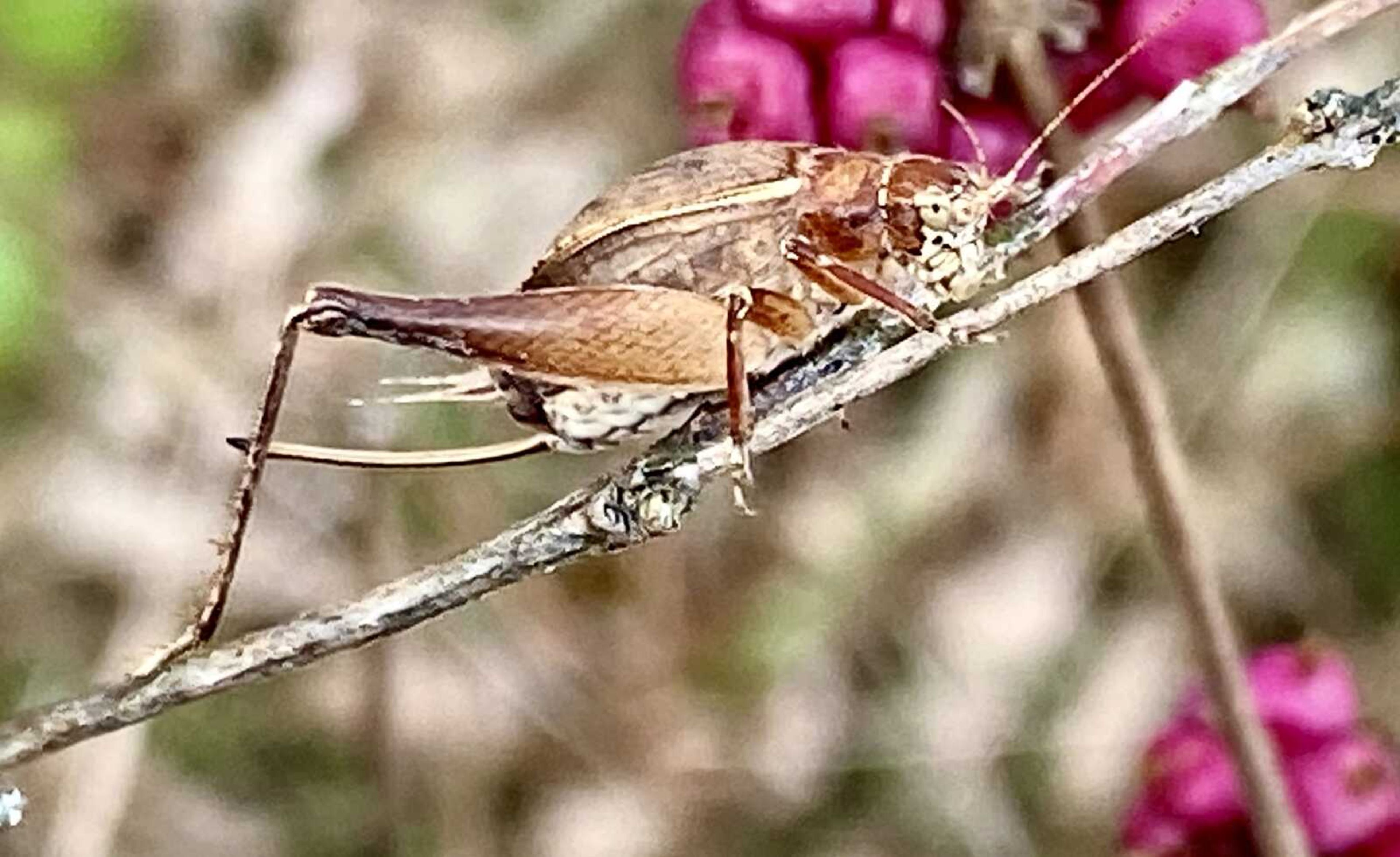There's a cricket in the woods
I took this photo Nov. 9 in a "feathered area" where short, thick brush transitioned into tall timber along a hillside. A substantial stand of buckbrush (also called coralberry) covered an area about the size of a basketball court. I walked carefully into the coralberry patch expecting to jump a rabbit...
I took this photo Nov. 9 in a "feathered area" where short, thick brush transitioned into tall timber along a hillside. A substantial stand of buckbrush (also called coralberry) covered an area about the size of a basketball court. I walked carefully into the coralberry patch expecting to jump a rabbit.
Instead of a rabbit, I saw an insect that at first I thought was a spider. It was the cricket you see here. This is an American native woodland cricket, the jumping bush cricket. The jumping bush cricket is similar in size to a common black cricket.
This cricket is seldom seen because it lives in the branches of bushes and trees. It is most active at night. If you are in the right place on a calm summer night, you may hear dozens of them making trills and chirps. They do not have the same sound of the cicada, nor the cadence of the katydid.
Connect with the Southeast Missourian Newsroom:
For corrections to this story or other insights for the editor, click here. To submit a letter to the editor, click here. To learn about the Southeast Missourian’s AI Policy, click here.











